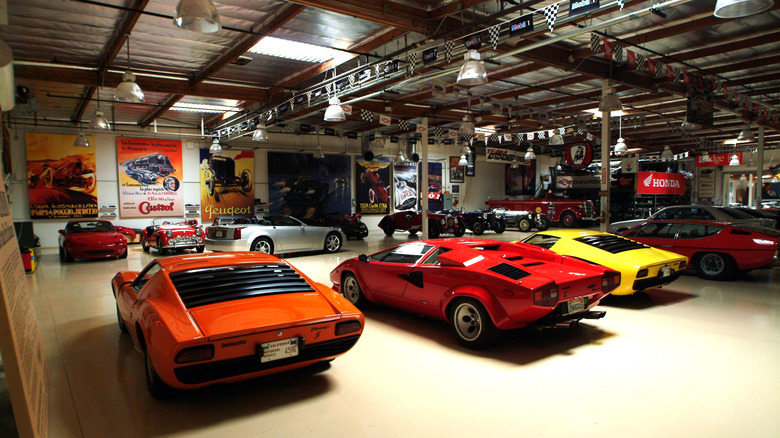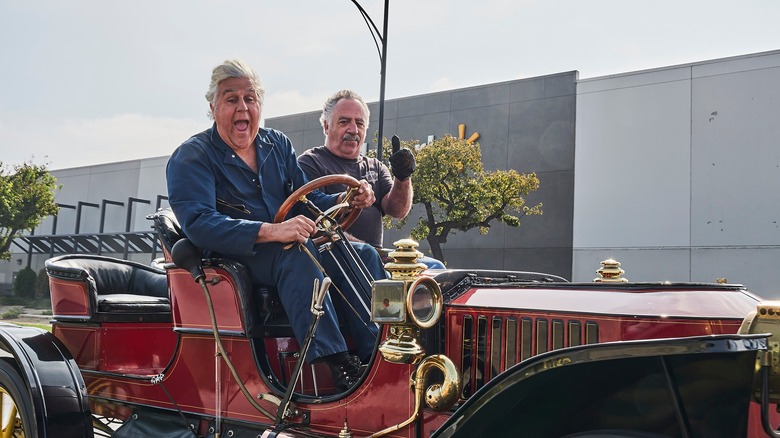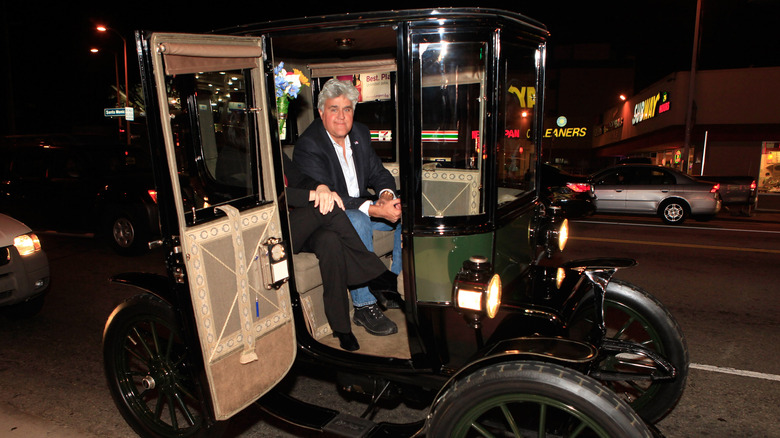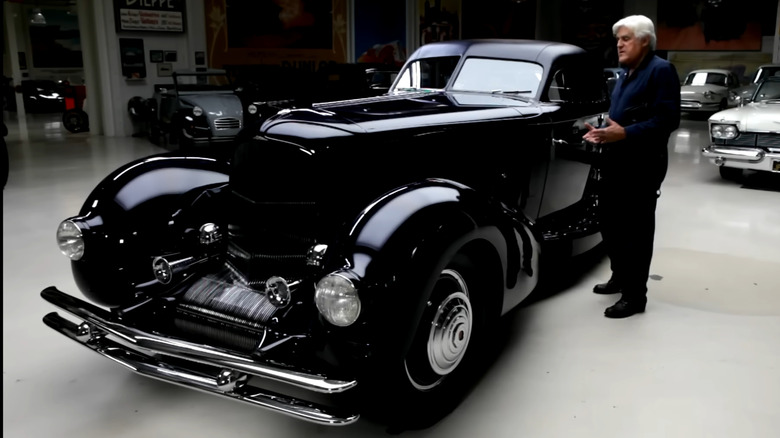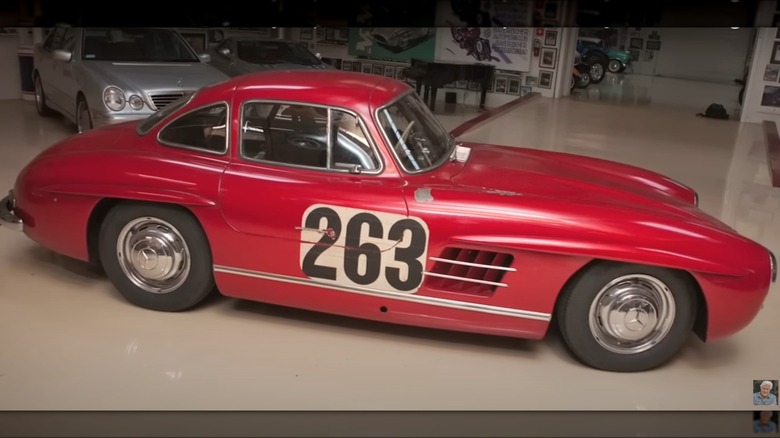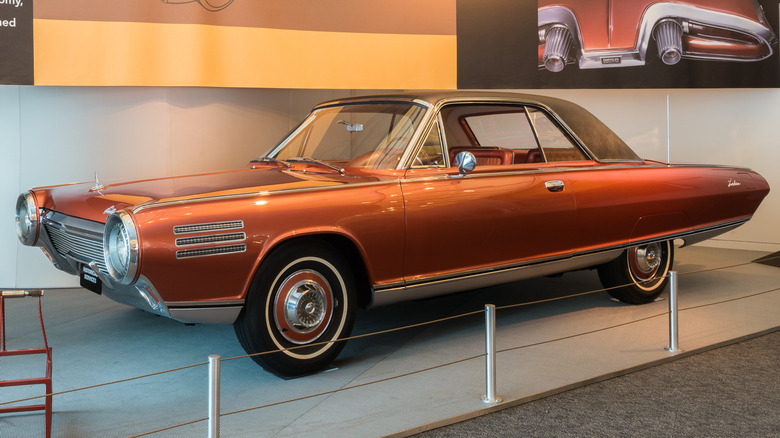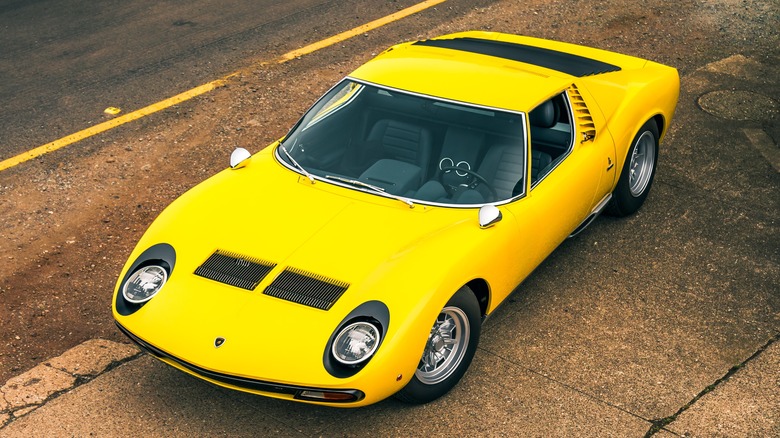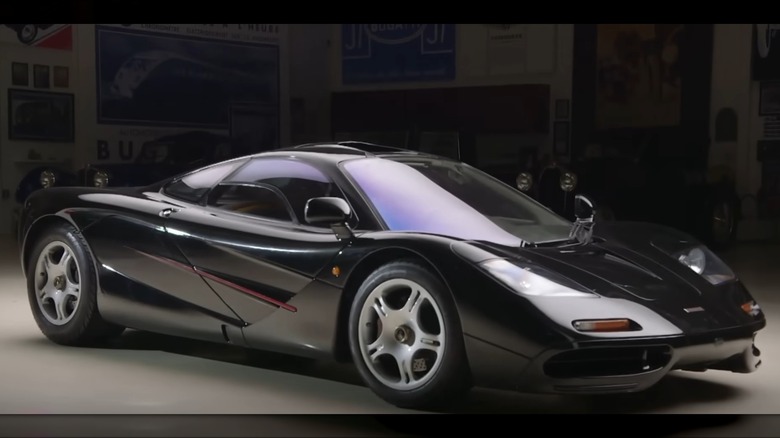7 Cars That Jay Leno Loves And What Makes Them Great
Jay Leno is a certified car enthusiast who has used his considerable entertainment-related income to build a spectacular collection of more than 181 antique, classic, and modern cars, along with 160 motorcycles. As opposed to many car collections that remain closed to the public, with their contents rarely seen, Jay Leno shares his collection in many different ways. He has a popular weekly YouTube series with 1,100 videos and 3,700,000 subscribers that highlights various cars in his collection. Jay drives his cars on the streets of Los Angeles. He also opens up his collection for charitable events of various types.
While Jay Leno undoubtedly loves all of the cars in his collection, there are some that stand out for their achievements and ongoing significance in automotive history. We will highlight seven cars that, each in their own unique way, contributed to the advancement of the automotive state of the art. Some of these are the most expensive cars in Jay Leno's Garage.
1906 Stanley Steamer Vanderbilt Cup Racer replica - steam-driven high performance
Starting with the oldest, here is a replica of the 1906 Stanley Steamer Vanderbilt Cup Racer. Back at the turn of the 20th century, steam cars had an advantage over gasoline-powered cars. Steam cars did not need to be crank-started and ran quietly (although you had to heat the gasoline or kerosene-fueled boiler to generate steam), while the loud, explosion-powered gas cars of the day scared people. As mass production made gas-engine cars like the Ford Model T more affordable, steam cars faded from the scene.
The original Stanley was one of two built to compete in the 1904-10 Vanderbilt Cup Races, the first major international auto races held in the U.S. The cars were not ready for the 1906 race, but went on to score many victories in other races afterwards (neither one survived). Jay's 1906 Stanley Steamer replica has been upgraded over time as various parts have deteriorated. The original 26-inch boiler was replaced by a 30-inch version, which increases the car's horsepower (a bigger boiler gives more power). The formerly mechanical rear brakes were upgraded to Jaguar hydraulic drum brakes for safety. Electric fuel pumps eliminate the need to use the hand-powered pump to maintain fuel pressure.
How fast can it go? Another similar but more streamlined Stanley set a steam-powered speed record of 127.659 mph in 1906. This record stood for more than 100 years, until it was broken in 2009 by only 20 mph. The Stanley achieved greatness for its amazing performance then and for holding that title for over a century.
1909 Baker Electric - from the first EV era
Next is the 1909 Baker Electric, the first commercially available EV. In the early 20th Century, electric cars competed directly with gasoline-powered vehicles. These early EVs were revolutionary – they were silent and clean, without any complex starting-up processes like steam cars (heating the boiler) and gasoline-powered cars (crank-starting) required. This hassle-free operation made electrics ideal for female drivers of the time, who used cars like the Baker Electric as local "shopping cars." In fact, Henry Ford's wife Clara drove a Baker Electric. The Baker is also Leno's wife's favorite car.
The 1909 Baker Electric in Jay Leno's collection has seen a battery upgrade. Instead of the original Edison alkaline batteries that were the Baker's standard equipment, Jay's Baker uses 12 six-volt deep-cycle golf cart batteries, which are good for a 100-mile range. The Baker Electric's top speed remains unchanged at 23 mph, which is plenty for a car that's as tall as it is long. Steering is by a tiller that folds out of the way when you enter. All lighting is electric, an advance over the acetylene gas lights of non-electric cars of the day.
Unfortunately, the "woman's car" stigma ultimately led to the failure of the first EV era. Baker Electrics were marketed to women, featuring fancy interiors and accessories like a flower vase and a makeup kit. According to Jay Leno, it was a case of "you can't sell a man a woman's car." And at that time, men controlled most of the money.
1934 Duesenberg Walker Coupe - the ultimate Duesie?
Duesenbergs were the Bugatti Veyrons of their time. The Duesenberg's greatness came from its advanced design and ability to cruise at 75-80 mph, back when early, narrow interstate highways were just being built! During the depths of the Depression, when a new Ford V8 cost $515.00 and a house could be purchased for $2,000, this custom-built aerodynamic 1934 Duesenberg Walker Coupe was sold to Josiah Lilly of Lilly Pharmaceutical for $25,000. It was the most expensive Duesenberg ever produced, but hadn't been seen in public since its initial purchase.
The intriguing story of this Duesenberg, one of the most expensive cars in Jay Leno's collection, continues past Lilly's one-year ownership. The second owner was the Canadian mistress of a Tammany Hall political boss. To keep the relationship quiet, she only drove the flamboyant car to Canada during trips home. The third owner had a service station and used the Duesenberg as a tow truck, complete with a hook on the back. It later sat rotting there for 10 to 15 years, by which time it needed a full restoration. The fourth owner purchased it in 1963 for $400, later selling the car to Leno for $500,000.
Jay had only 11 months until the next Pebble Beach event and began a proper restoration with the help of famed Duesenberg restorer Randy Ema. This involved new fenders, a total overhaul of the engine, and much more at a cost of another $500,000. The car took second place in the judging, only because it was not completely finished.
1955 Mercedes-Benz 300SL Gullwing - the Germans advance
This 1955 Mercedes-Benz 300SL Gullwing Coupe, like many cars in Jay's collection, started as an automotive basket case. Discovered in a container in the California desert, the Gullwing was missing its engine and transmission. It was raced, but had never been hit or in an accident. Jay is the third owner. The previous owner had the top people in the hot rod world restore the car, using Tony Nancy for the interior and Junior's House of Color to paint it Candy Apple Red. Jay chose to leave both alone for now, even though the desert climate had caused the paint to crack and fall off.
The mechanical restoration included its missing engine and transmission. The 1955 Gullwing was the first production car ever with direct gasoline fuel injection, a feature common on today's cars. Its 3.0-Liter inline six, slanted to one side for a lower hood line, put out 220 horsepower and drove the rear wheels through a four-speed manual transmission. Its aluminum tube-frame chassis made the gullwing doors necessary.
The Mercedes-Benz 300SL Gullwing, one of the coolest cars with gullwing doors, was owned by the "cool" people of the day, including Frank Sinatra and Elvis. At a time when most American cars struggled to hit 100 mph, the Gullwing had a top speed of 161 mph. Jay considers it the first supercar, even though many believe the Lamborghini Miura takes that title. The Gullwing's greatness comes from its unique design, its lightweight construction, and its spectacular performance on road and track.
1963 Chrysler Turbine Car - future tech that never happened
The 1963-64 Chrysler Turbine Car was a sensation at the New York World's Fair of 1964-65. Jay saw it while visiting the fair at age 14 and has lusted after one ever since. After the Chrysler Museum closed in 2012, Jay bought its 1963 Turbine Car.
The Chrysler Turbine Car was a bold technology experiment combined with a feasibility study and a publicity exercise. It represented the heyday of Chrysler, known then as an exceptional engineering company. Bodies were made by Ghia in Italy and shipped to Chrysler's Greenfield Road plant, where the engines and other parts were assembled into them at a rate of one per week.
A total of 203 people were selected to evaluate a Turbine Car for three months and report on its performance. While everyone liked them, their production cost was too high, with an expected retail price of $12,000 when a Cadillac cost $6,000. While the turbine engine had one-fifth the moving parts of a piston engine and needed no radiator, valves, or pistons, it had poor city fuel economy (partly due to a 22,000 rpm idle). What happened to the Turbine Car was the end of the program.
The Chrysler Turbine Car represents a time when we believed space-age technology would create a better future. We were headed to the Moon, we'd have jet-powered cars, anything was possible. Its greatness comes from Chrysler's willingness to make these incredible cars and then let the public drive them.
1967 Lamborghini Miura P400 - the first exotic car
The 1967 Lamborghini Miura P400 is one of many Lamborghinis in Leno's collection. His yellow Miura is an early-production car, number 127, with super-thin aluminum body panels, wind-up windows, and a very flexible chassis. Like all Miuras, the front end gets light over 120 mph as the airstream lifts it off the ground.
Its first owner was singer/actor Dean Martin, whose son Dino drove it to high school. Dino cracked the oil pan, and the engine seized. A friend of Jay's bought it, couldn't afford to fix it, and later gave it to Jay.
The iconic history of the Lamborghini Miura includes a story Jay tells about Ferrucio Lamborghini pulling up in front of the casino at Monte Carlo, driving the Marcello Gandini-designed Miura prototype. It was not intended for production, but Lamborghini received so many orders for the car after its appearance that he started building Miuras.
In late 1967, British automotive journalist L.J.K. Setright drove a Miura from the factory near Modena to England, then penned an article titled "1000 Miles in a Miura." While legend has it he called it a "supercar," the word itself does not appear. He did call it "an astonishing motorcar," that is "...an immensely fast, modern two seater with the world's finest engine, society's highest cachet, and plenty of scope for further development." Supercar, maybe, but the Miura's greatness comes from its unique mid-engine transverse-V12 layout, superlative engine performance, and seductive styling. It is definitely the first exotic car and the stuff of automotive fantasies!
1994 McLaren F1 - greatest car of the 20th Century?
The 1994 McLaren F1 in Jay Leno's collection was created as one man's vision of the perfect road car. The F1's greatness lies in its near-perfect execution of that vision.
The man behind the F1 is Gordon Murray, who built a groundbreaking, no-compromises, lightweight, three-seater GT that set new standards. Unveiled in 1992, it was priced at one million U.S. dollars, double the cost of the reigning supercar, the Ferrari F40. Unfortunately, there was a recession going on, and sales fell short of expectations. McLaren's solution was to go racing — in 1995, the F1 GTR racing version not only won Le Mans, it took four of the top five places! Credibility was restored, sales resumed, and McLaren F1 auction prices have now surpassed the $20 million dollar mark. Only 64 road-going F1s were produced, assuring their rarity and value.
The driver sits in the center for improved visibility, with a passenger on each side. The McLaren F1 is constructed of exotic materials including titanium, carbon fiber, magnesium, and even gold (to reflect engine heat). Its normally-aspirated, 6.0-Liter, BMW-sourced V12 engine puts out 627 horsepower, driving the rear wheels through a six-speed manual gearbox. Zero to 60 mph takes 3.2 seconds, and top speed at redline in sixth is 221 mph. It once held the title of fastest in the world.
Jay acquired his black F1, chassis 015, from its original owner, Ben Pon Jr. The purchase price, paid when the F1 was a year old, was supposedly $800,000.
